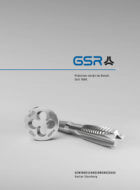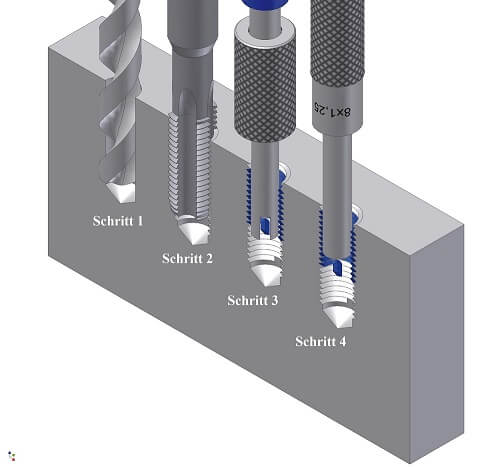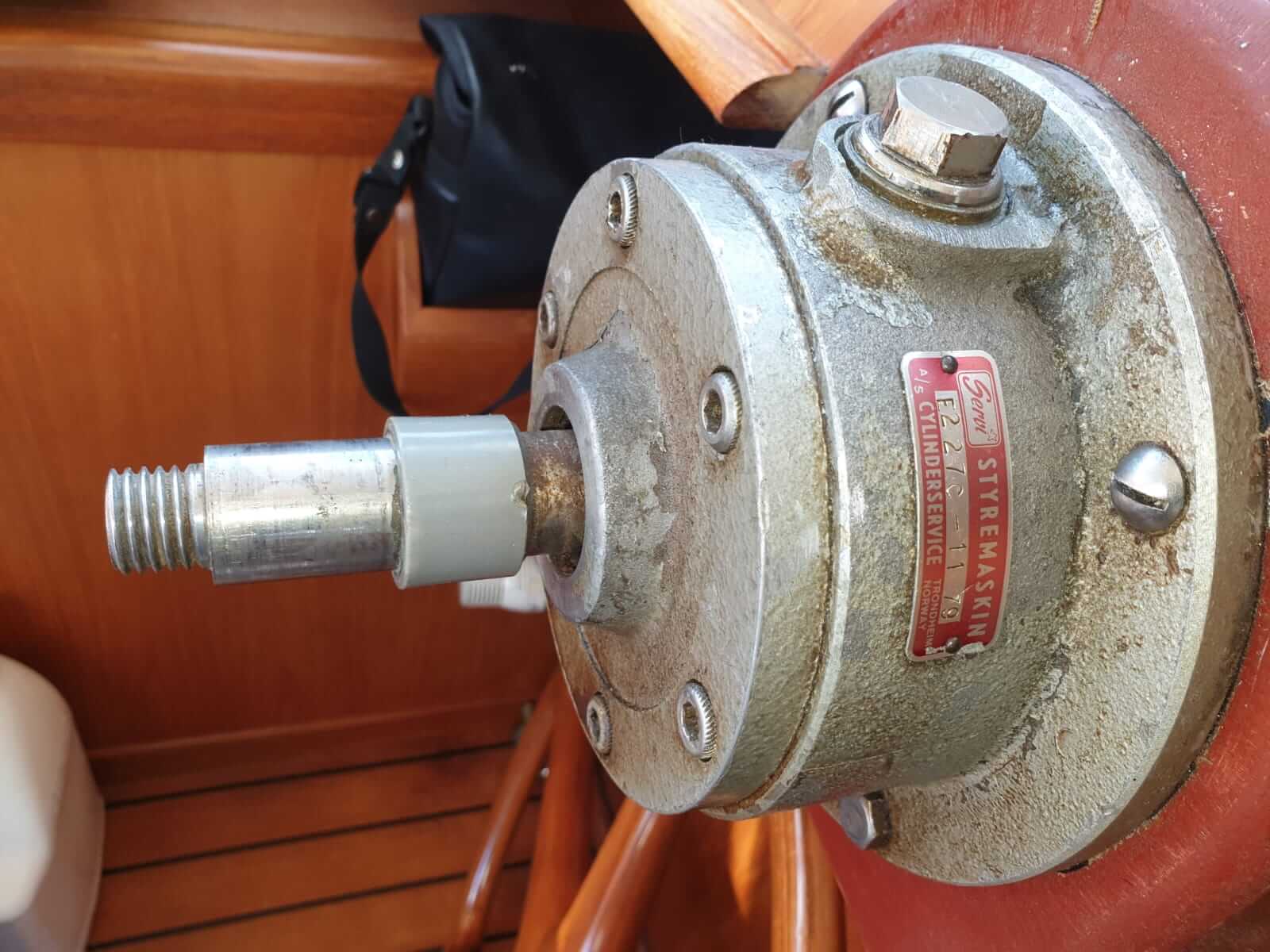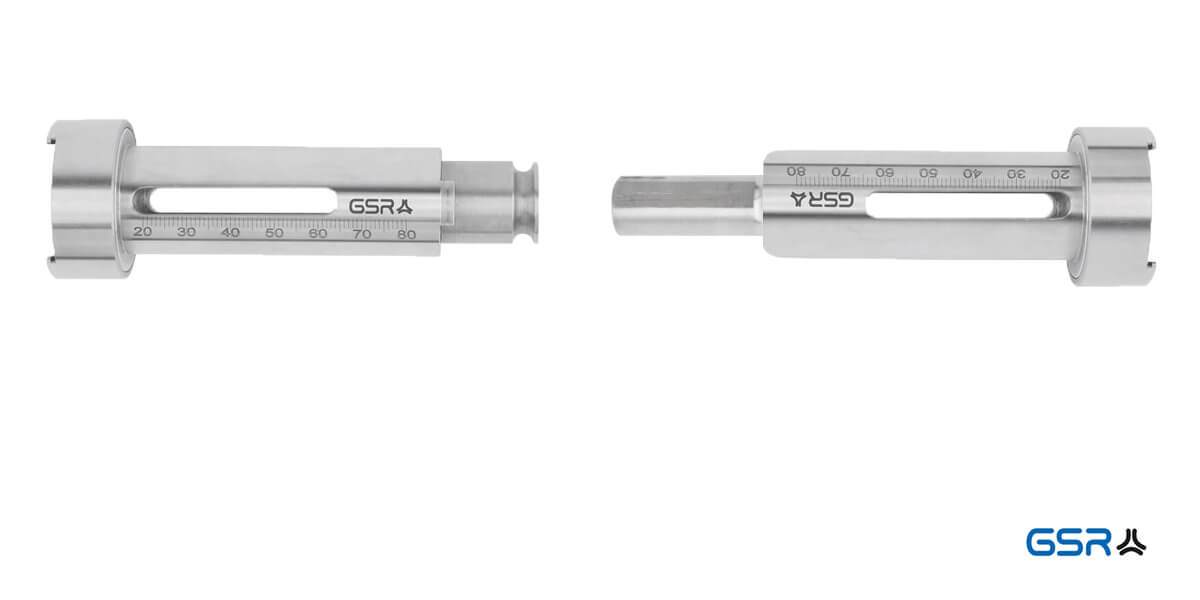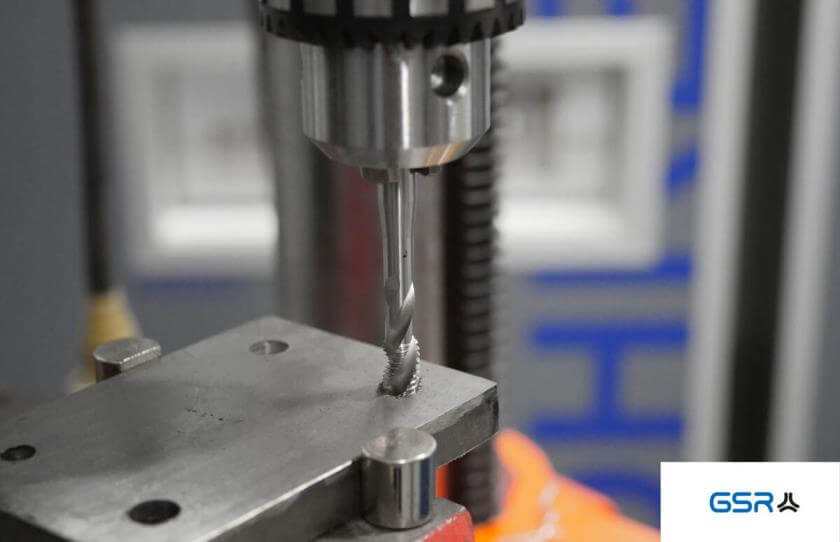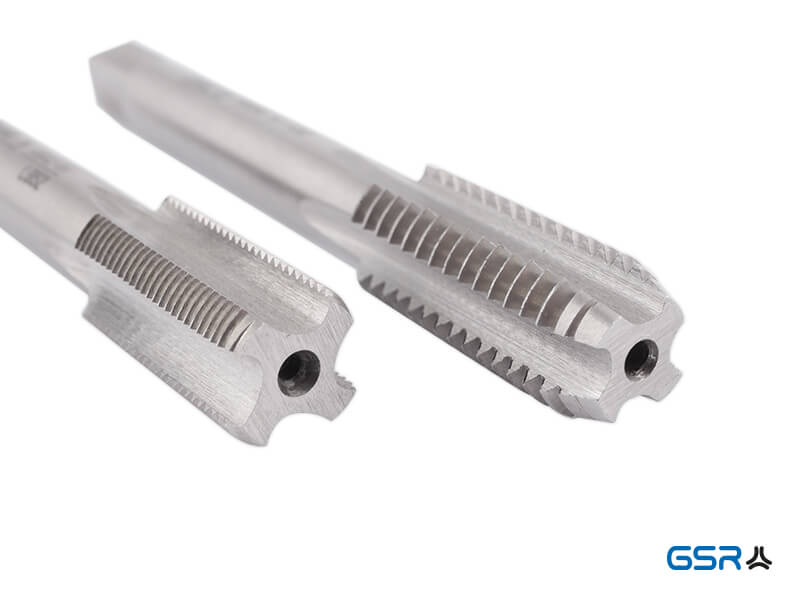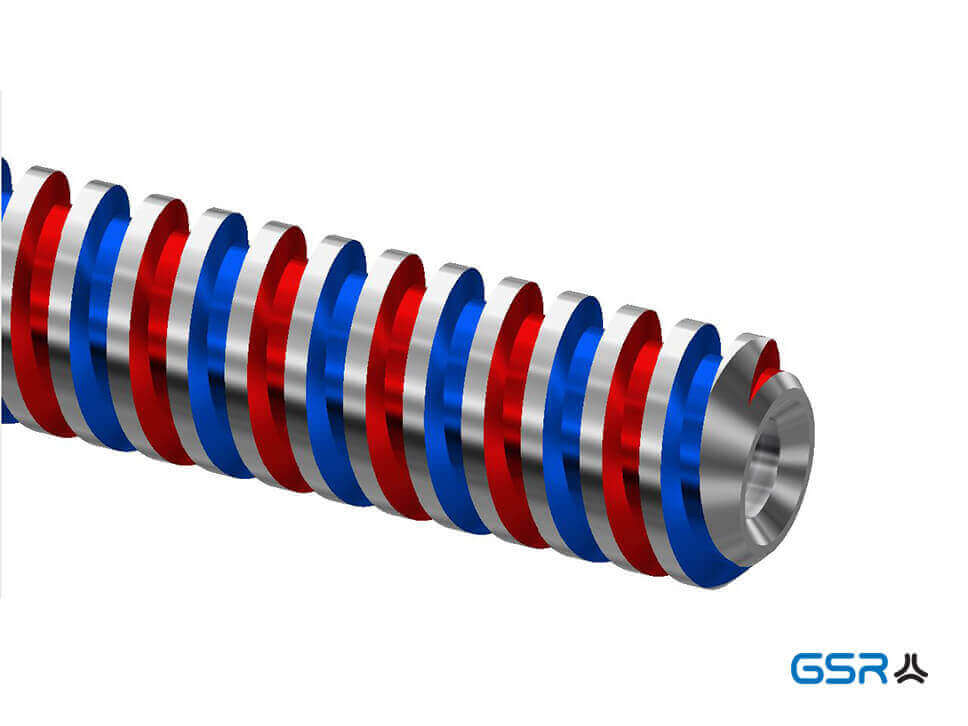#2 Practical example: 3 steps for thread determination (M12 Metric)
Also last week we received a customer inquiry with the request to determine the thread. This thread presented us with a small challenge ourselves. Since many of you have a similar situation with the thread determination, we would like to share our experience. Start with the thread determination in 3 steps (M12 Metric)!
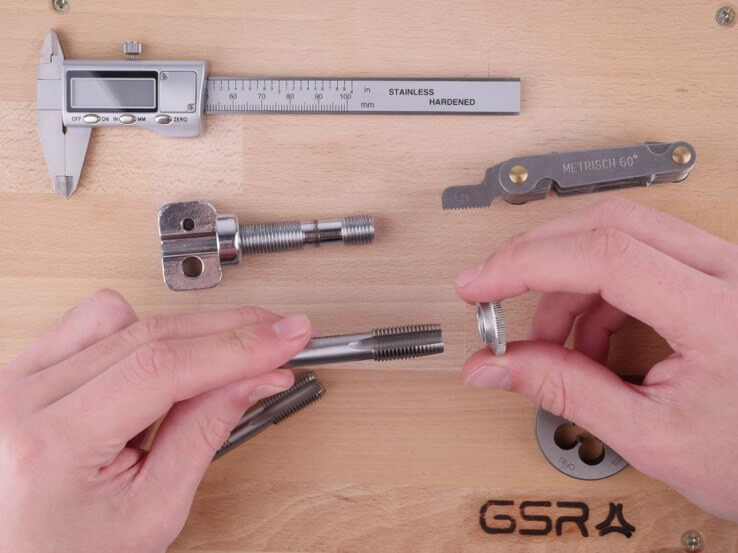
In the first part of this series:
#1 Practical example: 3 steps for thread determination (1/4″ inch) we have already compiled what you need for thread determination. Here is a short summary again:
You need two values to determine a thread:
- Diameter of the thread (this is determined with a caliper gauge)
- Pitch of the thread (This is determined with a thread template)
We offer thread determination sets in our shop.
You will need the following tools or aids to determine the thread:
- Workpiece on which you want to determine the thread.
- Caliper gauge, whether analog or digital is irrelevant.
- Thread template, preferably metric or imperial.
- Thread comparison table or conversion table or technical thread table (free download).
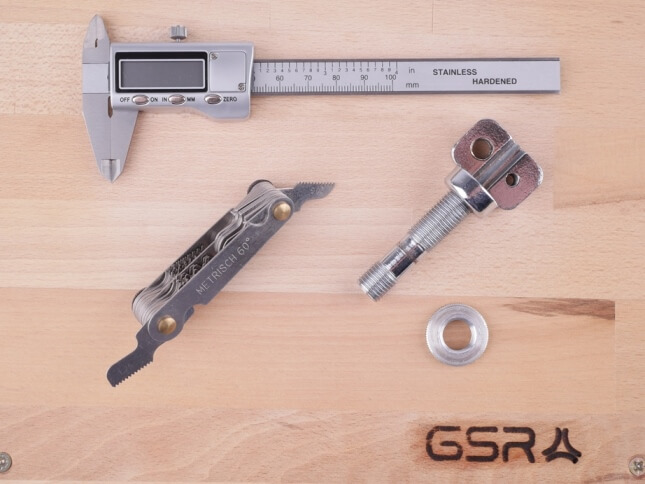
And you can already start with the do-it-yourself thread determination in 3 steps!
Step 1: Determine the thread diameter
As described in the first part of our series of articles, measure the diameter of the thread with the caliper gauge. Place the caliper gauge on the thread as shown in the picture below. Carry out the measurement once on the upper part and once on the lower part of the workpiece.
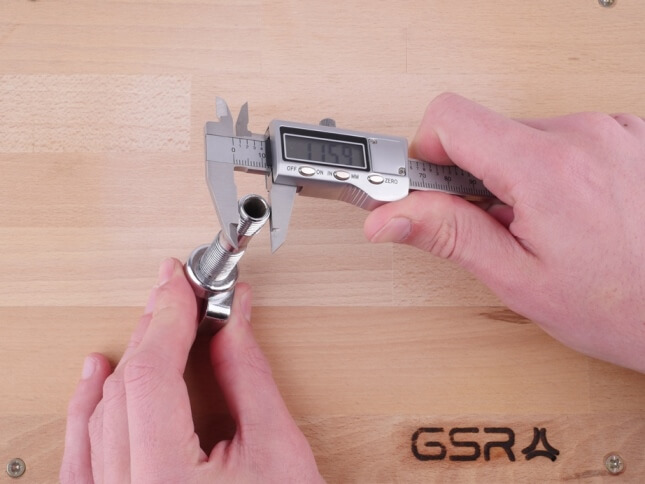

If the diameter is the same at both points, it is a parallel thread. If there are larger deviations, it is a tapered thread. These are mostly used for pipe threads.
In this case we have a thread diameter between 11.5 mm and 11.6 mm. This minimal deviation is nevertheless a parallel thread and not a tapered thread. These small deviations can be caused by wear or dirt. We can therefore exclude a tapered (= conical) thread.
Step 2: Determine the thread pitch
To determine the thread pitch, please use a combination thread template, i.e. a thread template with a metric as well as an imperial template. In this example exactly this was the decisive criterion for the correct thread determination.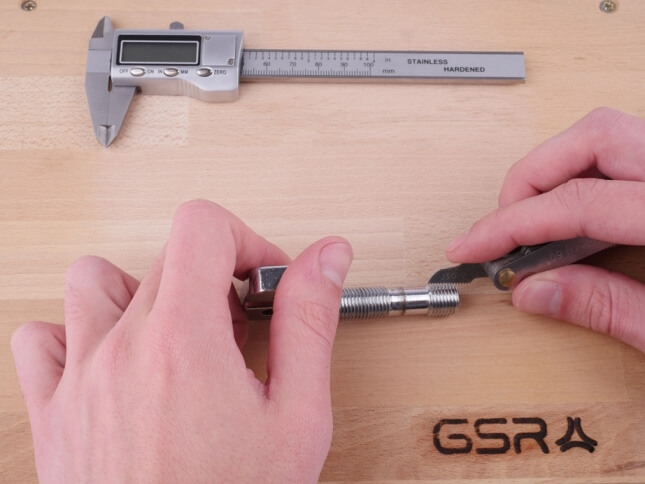
Digression:
Because when trying out the stencils, the inch stencil (flank angle: 55 degrees) with 20 gears fitted. But the relation to the diameter was not listed in any technical table. That made us suspicious and made us repeat the measuring series. And indeed, there was a measuring error.
The correct thread template that fits much more accurately is the metric 1.25 mm (flank angle: 60 degrees).

 Here is a video about the application of the thread template:
Here is a video about the application of the thread template:
Step 3: Look up values in the thread table
In the third and last step we collect all values again and determine our thread.
The following measured values are available:
- Thread diameter: 11.5 mm – 11.6 mm
- Thread pitch: 1.25 mm
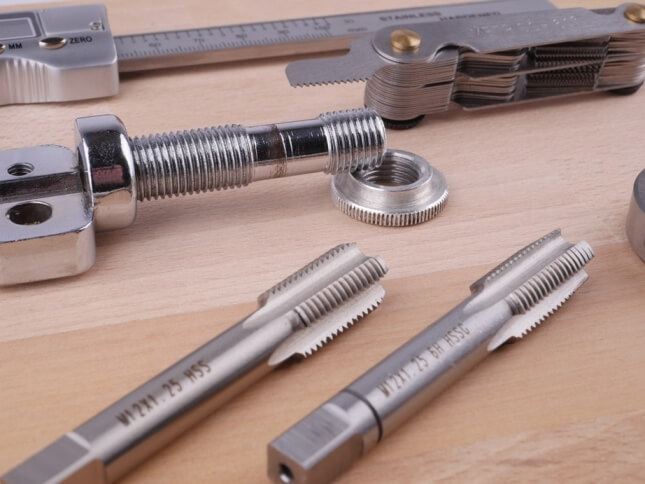
In the first article of this series of articles, we referred to the thread comparison table at this point. In this case we do not need to consult this table, since it is not an inch thread. Instead, we take a look at a technical thread table.
The result of the thread determination:
- MF 12 x 1.25
It is a metric ISO fine thread with a nominal diameter of 12 and a pitch of 1.25 mm.
The result may be confusing at first, but there are tolerance classes with minimum and maximum dimensions. These dimensions are given in some tables to the third decimal place and depend on the tolerance classes.
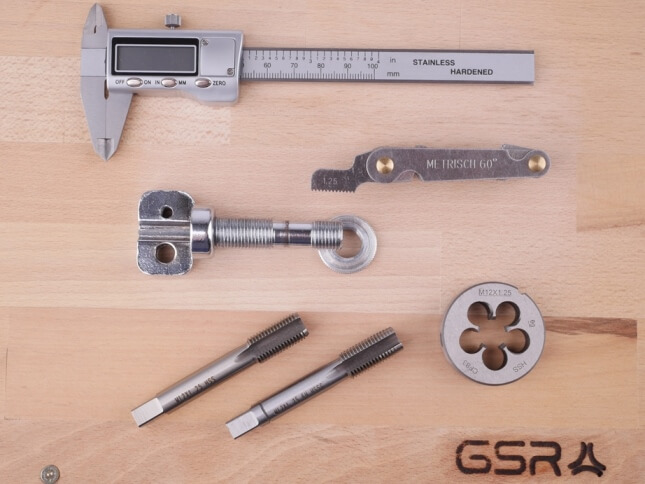
We then check our measured values by screwing a set of hand taps and MF 12 x 1.25 dies onto the workpiece. By the way: The hand tap sets for metric fine threads only consist of a taper tap and a finishing tap.
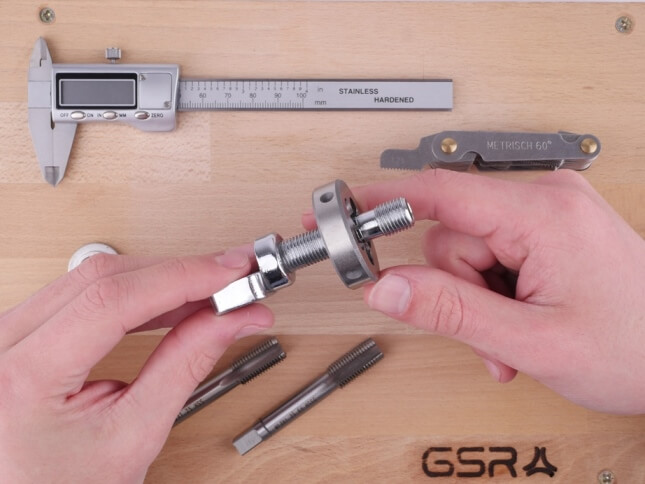
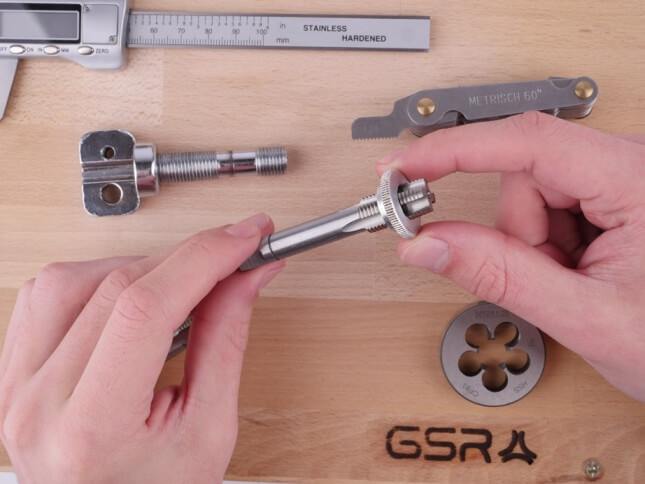

Additional information on the ISO fine thread
The ISO fine thread is a metric thread with a smaller pitch than the ISO standard thread. The pitch diameter of the metric fine thread is 60 degrees. Same as the standard thread. The most common abbreviation is M or MF. In most cases, the fine thread can only be recognized by its pitch.
Due to the smaller pitch, the fine thread has a higher load capacity. Metric fine thread is used especially in the automotive industry, where high demands are made on the load capacity of a thread. In addition, the fine thread has also become the standard for e-cigarette threads. 
We hope you enjoyed our 2nd contribution to thread determination in 3 steps. Do you have questions, suggestions or feedback? Leave us a comment. Or write to our support.






